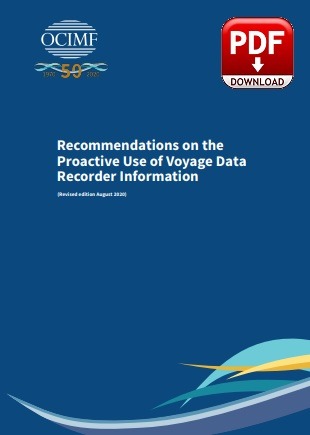
(www.MaritimeCyprus.com) Collisions, contact damage/allisions and groundings are commonly categorized as navigational incidents when assessing incident statistics.
The European Maritime Safety Agency’s (EMSA) Annual Overview of Accident Statistics 2019 indicated that from 2011 to 2018 navigational casualties represent more than 54.4% of the overall casualty events, with collisions (26.2%), contacts (15.3%) and grounding/stranding (12.9%). These figures show that navigational casualties accounted for 48.7% of the total oil tanker casualties reported by EMSA during that period.
Although at 48.7% the percentage of navigational incidents for oil tankers is less than the
equivalent overall figure (54.4%), it is still close to the figure of around 50%, which was noted in OCIMF’s Recommendations on the Proactive Use of Voyage Data Recorder Information (based on 1978-2011 statistics).
Voyage Data Recorder (VDR):Â
Since 2002 (new build) or 2006 (existing) tankers in excess of 3,000 gross tonnes on international voyages have been required to be fitted with a Voyage Data Recorder (VDR) or Simplified Voyage Data Recorder (S-VDR), respectively. When VDRs were first fitted, the data was typically only reviewed reactively following an accident or incident. However, in 2013 reflecting on the longstanding experience of proactive use of Flight Data Recorder (FDR) data to enhance safety in the aviation industry, the Oil Companies International Marine Forum (OCIMF) published the below Recommendations on the Proactive Use of Voyage Data Recorder Information.
New VDRs fitted since 2014 have had to meet updated performance requirements (see IMO
Resolution MSC.333(90) Revised Performance Standards for Shipborne Voyage Data Recorders (VDRs). This publication updates the 2013 OCIMF information paper to consider the impact of these updated requirements, along with the experience of using VDR data proactively, particularly related to the assessment of human factors considerations. Recommendations are made as to how to obtain the maximum benefit from the proactive use of VDR data.
Revised VDR carriage requirements:
The International Maritime Organization (IMO) published revised performance standards for
shipborne VDRs, which were adopted in May 2012 under Resolution MSC.333(90). The IMO
recommended that governments ensure that VDRs installed on or after 1 July 2014, conform to performance standards not inferior to those specified in the annex to this resolution.
VDRs and S-VDRs installed before 1 July 2014, could continue to meet the original specifications, i.e. IMO Resolutions A.861(20) and MSC.163(78) respectively, as amended by Resolution MSC.214(81). While there was no requirement to retrofit the new specification VDRs to existing ships, in practice replacement of older VDRs is becoming more common as existing VDR models reach the end of their support life. Some shipowners/operators have proactively upgraded or renewed old VDRs as a best practice measure, anticipating reduced spare part/service availability, as well as to proactively undertake navigational assessment and audits more effectively (see OCIMF’s Guide to Best Practice of Navigational Assessments and Audits).
The most significant changes in the revised performance standards were associated with the new requirements to record data for longer periods, and the inclusion of additional data input sources.
Following an accident, VDR data can assist owners and operators evaluate the performance of shipboard personnel and vessel equipment, while also helping to determine causal factors related to an incident. This information can be essential for resolving damage claims arising from an accident. Does your VDR work? Don’t wait to find out!
VDR Data retention:
One of the most significant changes in the revised performance standards from the data analysis viewpoint was that the VDR should now be equipped with a long term recording medium, which will retain data for at least 30 days/720 hours.
The performance standard also requires that there should be a data output interface based on an internationally recognized format (e.g. ethernet, Universal Serial Bus (USB), Firewire, etc.) which should enable the download of data for a user-defined period of time.
The original IMO resolution on VDR performance standards only required data to be stored
for a minimum of 12 hours. As a result, data was often overwritten before it could be saved or downloaded. The requirement for a significantly extended recording period means that
data should always be available and can be retrieved following the vast majority of incidents, without anyone having to remember to save the data for up to 30 days after the event. It also offers increased scope to analyze the data for trends over longer time periods and undertake navigational assessments of bridge team behaviors and audits against the Safety Management System (SMS) Navigational policy, as a proactive measure.
In addition to the long term recording medium, the revised requirements also require that the VDR is fitted with both fixed and float-free recording media (capsules), which should retain the last 48 hours’ data. Previous IMO performance specifications only required either fixed or float-free recording media to be fitted and retain the last 12 hours’ data. This change increases the chances of data being recoverable in the event of a major accident where the ship sinks or catches fire.
Click on the below image to download to find out more:
Source: OCIMF

https://youtu.be/O3zdy7Vu710














